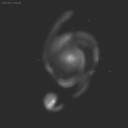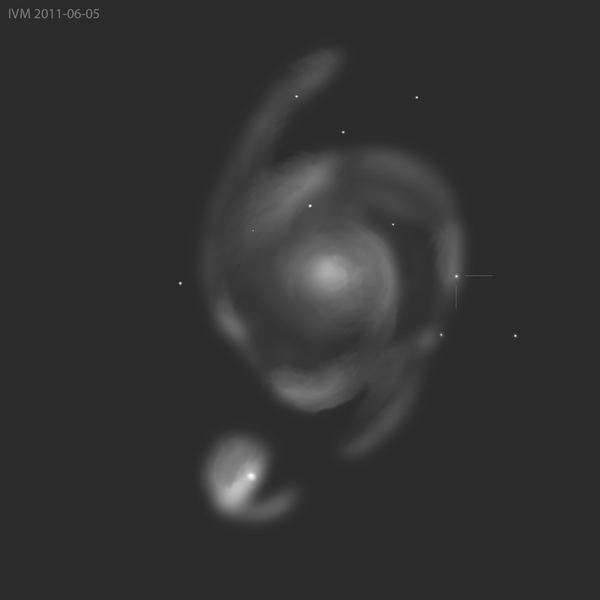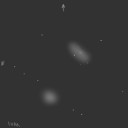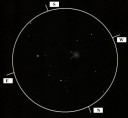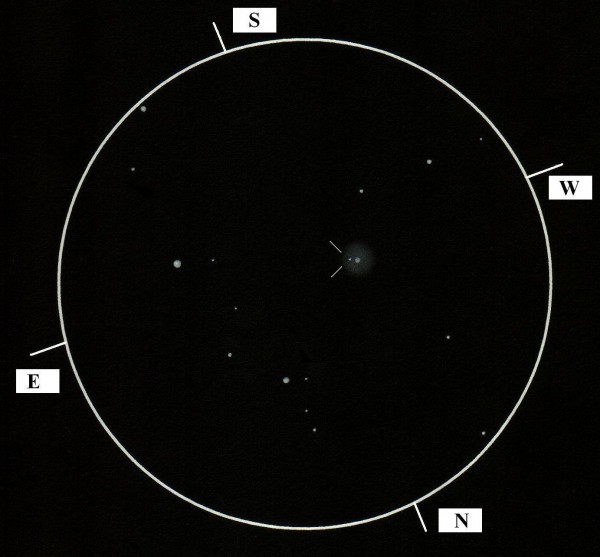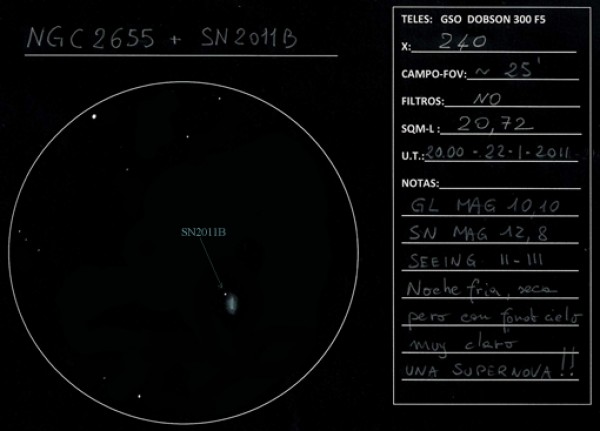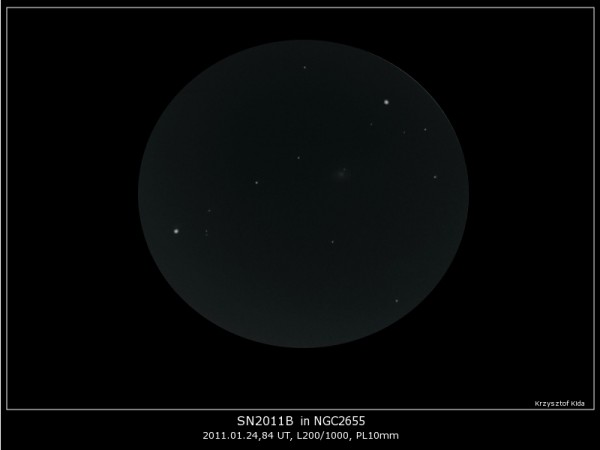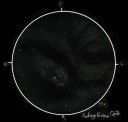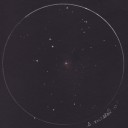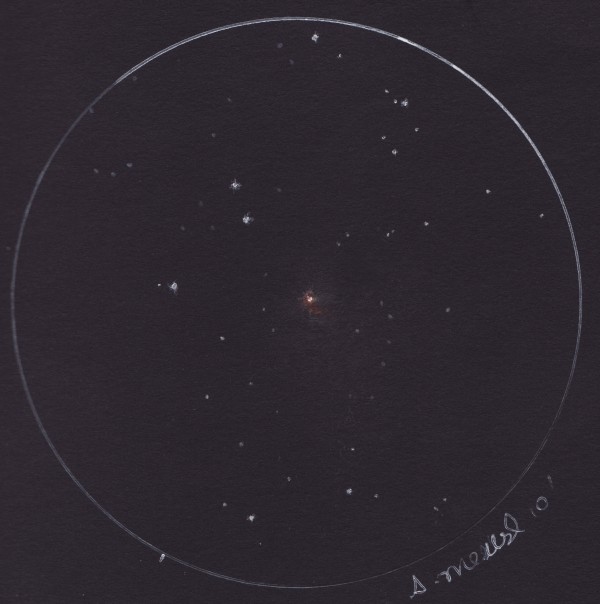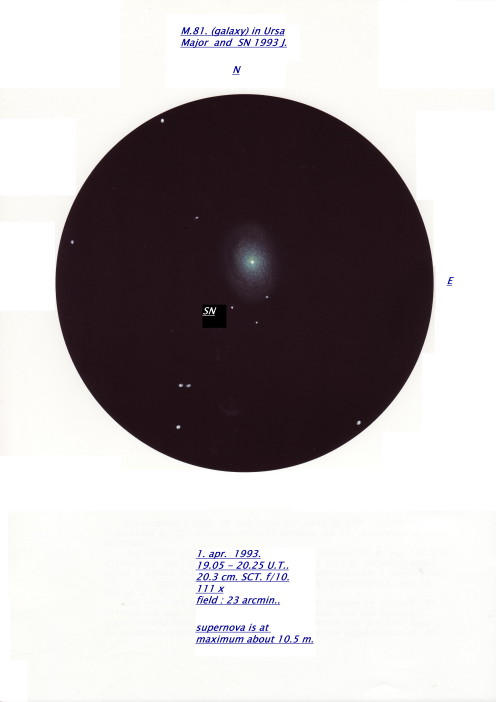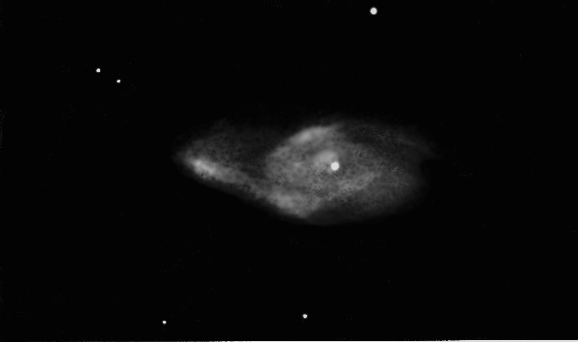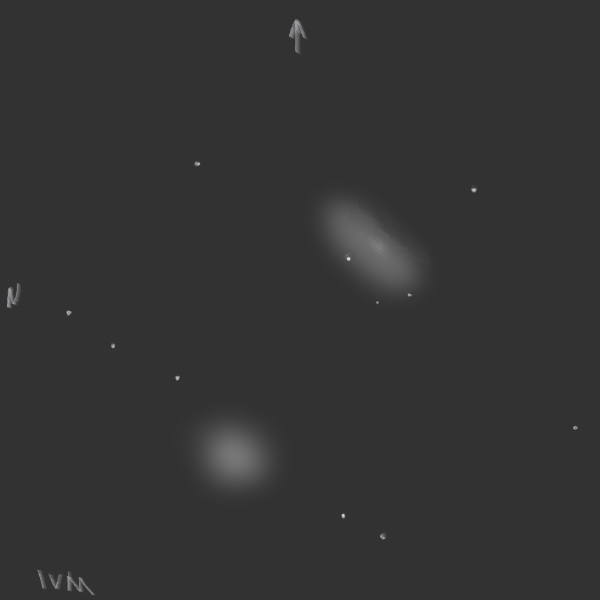
Object names: SN2011by, NGC 3972, NGC 3977
Object types: supernova, galaxy, galaxy pair
Location: Cherry Springs Dark Sky Park, Pennsylvania
Date: May 5, 2011
Media: digital
Notes
16” Dobsonian, 75-300x. The supernova SN2011by is the brightest star in the field. It is superimposed on the NE edge of the elongated galaxy NGC 3972, just to the left of the galaxy’s core in the drawing. The round galaxy is NGC 3977, in which recorded supernovae occurred in 1946 and 2006.
As of this writing, supernova 2011by is still the brightest currently in the sky, and still rising at magnitude 12.5. The magnitude in the sketch title refers to the time of my observation. It is in NGC 3972 right next to Gamma Ursae Majoris. This is very nice intermediate-inclination spiral that I saw last year with my 4”. I still retain the mental image of a nicely elongated blob. It can now serve me as something that supernova photographers would call the “pre-discovery image.” SN2011by was discovered at the end of April. At the redshift distance of NGC 3972 (46 Mly) it should become mag. 11.5, according to my rough calculations, and at the mean Tully-Fisher distance from NED (18 Mpc) it should still become 12.0. I.e. it might become a worthy target for “department-store scopes.”
I was curious about the structure in the host galaxy, which is featured in The de Vaucouleurs Atlas as a paradigmatic SA(s)bc. The southwest edge, which is opposite the supernova, is the one closest to us, judging by the photos. I thought that with some appropriate effort expended, the arm running along this edge and even some enhancements in it could potentially be visible in a 16”. But, somewhat disappointingly, all I could see was this edge being sharper than the one with the supernova. The view was essentially identical under a range of magnifications from 100 to 300x. On the other hand, this means that my “post-discovery image” (the view through the 16″) is only subtly different from my “pre-discovery image” (last year’s view throught the 4″), as far as the galaxy itself is concerned.
The field overall is very impressive. Not to mention the supernova, the elongation and asymmetry of NGC 3972 have their counterpoint in the perfect roundness of its apparent companion, NGC 3977. Unlike NGC 3972, this face-on spiral could not be just casually swept up last year with the 4”, and I did not stop to look for it then. NGC 3977 itself was host to two recorded supernovae, 1946A and 2006gs. About them I can only find that 2006gs reached mag 17. The only distance for NGC 3977 in NED is by redshift, 263 Mly. This is far indeed – 5 times farther than NGC 3972, adding to the perceived depth of this remarkable field.
At the eyepiece, I make a schematic in ball pen that records the essential information about positions, sizes, and the contrast, and concentrate on preserving my dark adaptation and building the mental image instead of detailed sketching. Subsequently I use a pressure- and tilt-sensitive digital pen tablet to simulate pencil, blender, and other traditional tools, to create the clean digital drawing, concentrating on conveying the visual appearance of stars and nebulosity.
